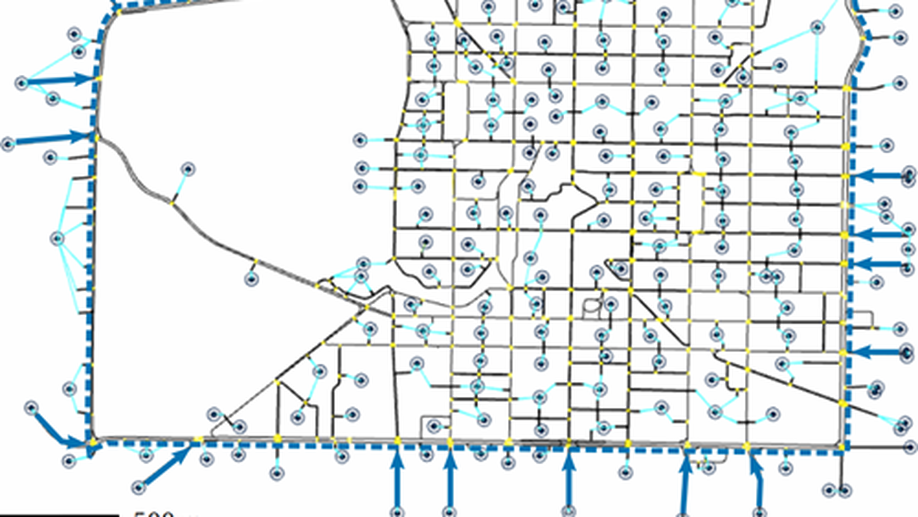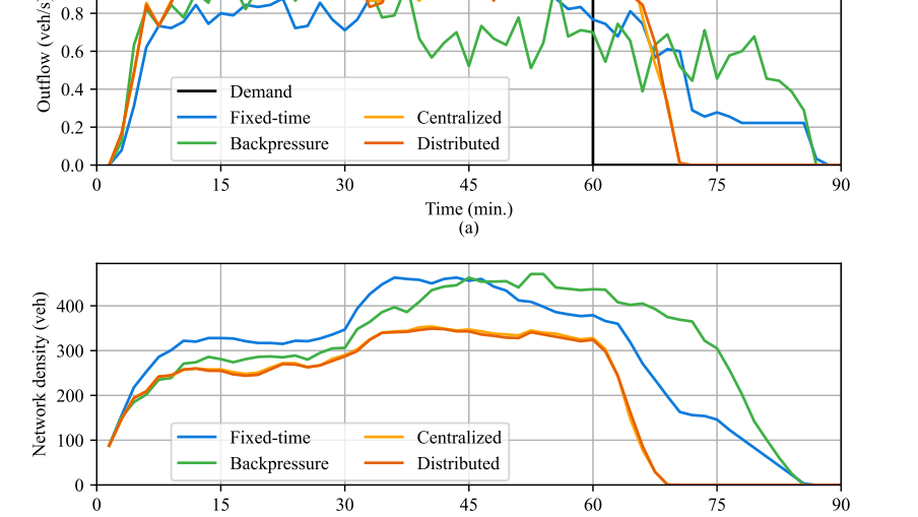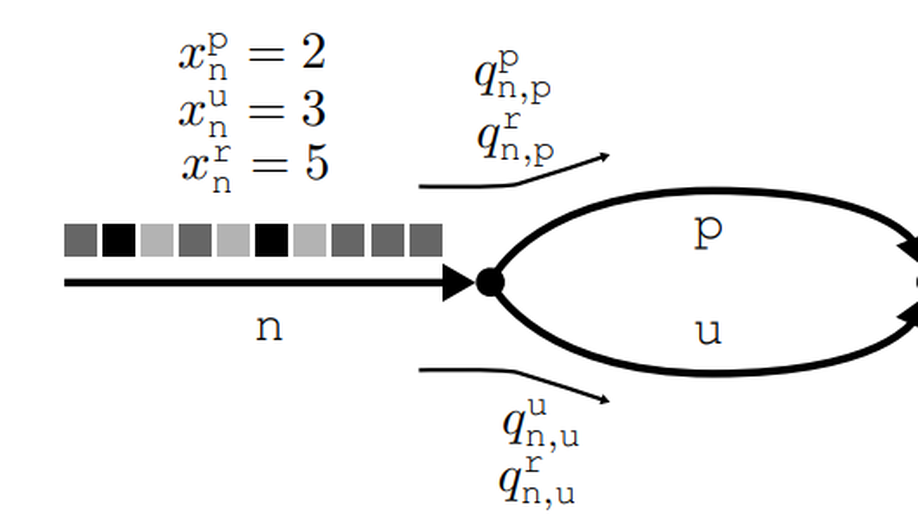
A mesoscopic link-transmission-model able to track individual vehicles
We show in this paper adaptations on link and node models of the link-transmission (LTM) model allowing vehicles to be indivually tracked while keeping the LTM properties and advantages.

On the evaluation and selection of network-level traffic control policies: perimeter control, TUC, and their combination
It is established that perimter control is beneficial compared to fixed time, but is it better or worse than adaptive signal control? Should we use perimeter control, adaptive control or apply both concurrently? Those were the motivating questions of our study.
Distributed Optimization for Multi-commodity Urban Traffic Control
In this study, we cast the route and signal control controller into a distributed approach. We use the augmented Lagrangian to model the constraints into the objective and decompose the model into a set of objective-coupled subproblems, one for each intersection, enabling the solution to be computed by a distributed-gradient projection algorithm. We show that the approach is feasible to be deployed in real-time.

Synergies between repositioning and charging strategies for shared autonomous electric vehicle fleets
The emergence of on-demand shared autonomous electric vehicle (SAEV) service requires careful charging station planning and a joint charging and repositioning strategy to mitigate empty travel. This study couples charging and repositioning events as a means of improving service quality (rider wait times), reducing empty travel due to repositioning or charging, and improving fleet utilization (average daily trips per vehicle and charging queues). This synergy is explored for the Austin, Texas region using POLARIS, an agent-based model. On average, wait times were 39% lower, and average daily trips served per SAEV increased up to 6.4 (or 28%) compared to SAEV repositioning with heuristic charging. Coupling repositioning with charging decreased the fleet’s percent empty travel on average by 1.6%, relative to the scenario treating them as independent events (which varies by charging station design). Sparser charging stations reduce investment costs, and operators can leverage this framework to keep traveler wait times low.

Multi-Commodity Traffic Signal Control and Routing with Connected Vehicles
The automation aspect of connected and automated vehicles, namely the possibility of allowing short headways and therefore higher capacity, is extensively investigated in the CAV realm compared to the connectivity aspect. What can we do with connectivity information while vehicle are still human-driven? In this study, we propose a method for concurrent routing and adaptive signal using a multi-commodity approach.